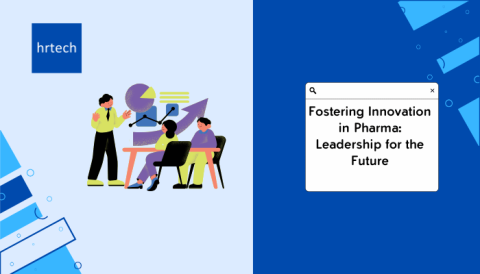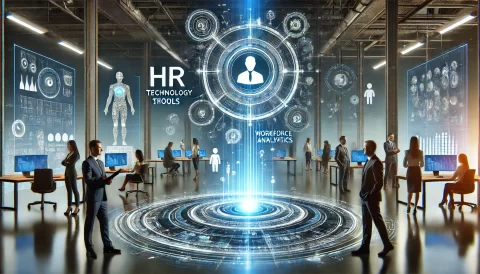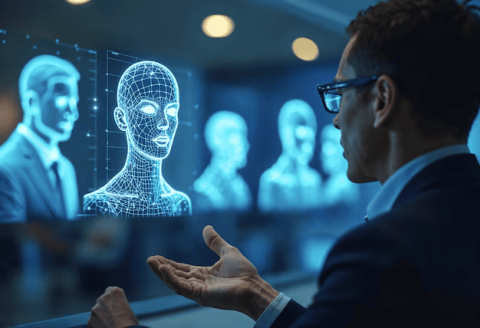The need for workforce upskilling has become a critical focus for organizations seeking to remain competitive in today’s rapidly changing business environment. These gaps not only affect the current performance of employees but also threaten the long-term viability of companies across industries. For example, 75% of business leaders report skill gaps hindering their organization’s growth, highlighting the urgent need to address this issue with targeted training and development initiatives.
When skill gaps go unaddressed, the consequences can be severe. Organizations often experience reduced productivity, as employees lack the expertise needed to perform tasks efficiently. This, in turn, leads to missed opportunities in the market, as businesses fail to innovate at the pace required to stay ahead of competitors.
In this blog, we will explore the importance of addressing skill gaps and their impact on both organizations and employees. We’ll also discuss the limitations of traditional training methods and how they fall short in today’s fast-paced business environment. Personalized learning journeys, and progress tracking, can drive effective workforce upskilling.
What Are Skill Gaps?
Skill gaps refer to the discrepancy between the skills an employee currently possesses and the skills required to perform their job effectively or meet evolving industry standards. These gaps can manifest in several ways, including a lack of expertise in new technologies, insufficient leadership capabilities, or a deficiency in soft skills like communication and problem-solving.
Skill gaps can appear in both technical and non-technical areas. For example, in industries such as IT and healthcare, technological advancements require workers to be proficient in new tools, software, and systems.
Why Do Skill Gaps Occur?
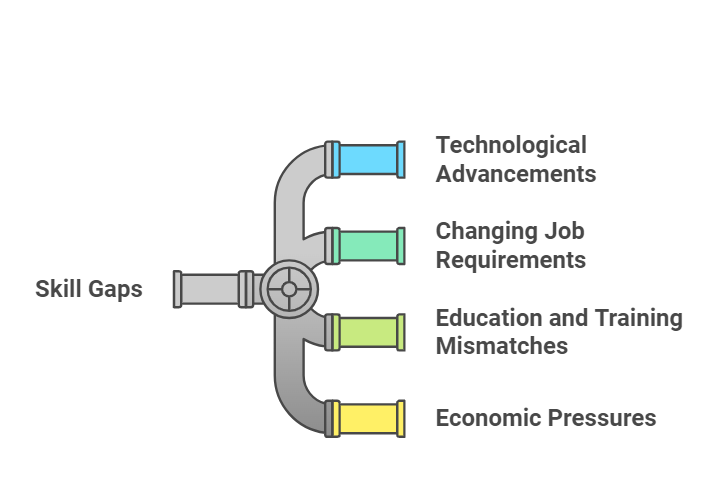
Skill gaps often arise for a variety of reasons, largely driven by the rapid pace of change in both technology and business environments. Some of the main factors include:
- Technological Advancements: As new technologies emerge, employees must continually update their skill sets to keep pace. Without proper training or continuous learning, workers may fall behind, resulting in a skills mismatch.
- Changing Job Requirements: Job roles are evolving in response to new business strategies and market conditions. Employees may be hired for one set of responsibilities but find that their roles shift, requiring new skills that they weren’t initially trained for.
- Education and Training Mismatches: Traditional education systems and training programs sometimes fail to align with the specific needs of employers. As industries progress, there may not be enough emphasis on the technical or soft skills required to succeed in today’s workforce.
- Economic Pressures: In a volatile economy, businesses are often under pressure to maintain profitability. As a result, organizations may cut back on training and development programs, inadvertently widening skill gaps among employees.
By understanding the origins of skill gaps, companies can take proactive steps to bridge these divides through targeted training and workforce upskilling initiatives.
Learn more about how Disprz can help HR leaders create a framework for success by reading this insightful guide on building a skills-first culture.
Causes of Workforce Skill Gaps
Several key factors drive the emergence of skill gaps in the workforce:
- Rapid Technological Advancements: The introduction of new technologies, such as AI, automation, and data analytics, requires employees to develop new skills quickly. However, many workers may not have received the necessary training to adapt to these changes, leading to gaps.
- Shifting Industry Demands: As industries evolve, new skills become essential. For example, as companies prioritize sustainability or digital transformation, employees must acquire new knowledge and capabilities to stay competitive.
- Evolving Job Roles: The roles employees are hired for are no longer static. Job descriptions, responsibilities, and expectations change as businesses innovate and adapt to new challenges. Employees who don’t receive continuous learning opportunities may struggle to keep up with these shifts.
Through workforce upskilling strategies powered by advanced AI-driven assessments, personalized learning paths, and robust progress tracking, Disprz can help your organization address skill gaps and foster continuous growth.
Check out Disprz, an impact-first, generative learning & skilling platform that can empower your workforce to stay ahead in a rapidly changing world.
Impact of Workforce Skill Gaps
Skill gaps can have a far-reaching impact on both organizational performance and employee satisfaction:
- Organizational Goals: Skill gaps prevent organizations from achieving their key performance indicators (KPIs) and objectives. Whether it’s slowing down innovation, reducing productivity, or failing to meet customer expectations, these gaps directly affect business outcomes.
- Employee Engagement: When employees face skill gaps, they may experience career stagnation, leading to frustration, disengagement, and even turnover. Employees are more likely to stay with companies that offer development opportunities, making it crucial for businesses to address skill gaps proactively.
To better understand the scale of the challenge and the critical need for action, it’s essential to explore the broader trends shaping the workforce. As Generative AI plays a pivotal role in reshaping job requirements, organizations must act swiftly to close these gaps.
Discover how GenAI is influencing workforce dynamics.
Scale of the Problem
The need for workforce upskilling is more urgent than ever. Recent statistics paint a clear picture of the growing challenge:
- According to Skillsoft, 75% of business leaders report that skill gaps are hindering their organization’s growth and success.
- According to Gartner reports, 64% of managers believe their employees are not equipped to meet future skill demands. Additionally, 70% of employees admit they have yet to master the skills required for their current roles.
- According to Forbes the executives estimate that nearly 49% of the skills within their current workforce will become obsolete by 2025. Additionally, 47% believe their employees are unprepared for the future workplace.
These statistics highlight the importance of implementing a strategic, long-term approach to workforce development. With the rise of new technologies and business models, companies must act now to close these gaps and secure a competitive future.
Challenges of Traditional Training Methods
Workforce upskilling requires a modern approach that adapts to the dynamic nature of job roles and technological advancements. Let’s explore the limitations of conventional training methods and why they fall short in meeting the demands of today’s workforce.
Limitations of Traditional Training Methods
Traditional training methods have long been the cornerstone of employee development, but they struggle to keep pace with the rapid evolution of skills required in modern roles.
- One-Size-Fits-All Solutions Lack Personalization: Conventional training typically takes a one-size-fits-all approach, ignoring the unique learning styles and skill levels of individual employees. People with varying roles or experiences within an organization often need tailored learning paths, a need that traditional methods often overlook.
- Time-Intensive, Outdated Methods That Don’t Adapt to Evolving Roles: Traditional training programs are often long and inflexible, pulling employees away from their daily tasks. They also struggle to keep pace with fast-changing technology and evolving job requirements, leaving employees with outdated skills that don’t align with future needs.
- High Costs with Limited Measurable Outcomes: Conventional training programs often involve substantial upfront costs, including hiring trainers, creating materials, and setting up in-person sessions. Despite these high investments, the outcomes of such programs are often hard to measure. Companies struggle to assess whether employees are truly gaining the skills they need to excel in their roles.
To effectively close skill gaps, organizations must adopt a building a skills-first culture that prioritizes continuous development.
Disconnect Between Traditional Methods and Today’s Dynamic Business Landscape
Traditional business practices often struggle to keep pace with today’s fast-evolving market demands. As industries embrace digital tools, real-time data, and agile strategies, outdated approaches can hinder growth.
Below is the table of traditional methods and modern business landscape needs differences.with today’s fast-evolving market demands. As industries embrace digital tools, real-time data, and agile strategies, outdated approaches can hinder growth.
Below is the table of traditional methods and modern business landscape needs differences.
| Aspect | Traditional Training Methods | Modern Business Landscape Needs |
| Flexibility | Rigid, one-size-fits-all solutions. | Requires personalized learning paths and adaptability. |
| Learning Format | Focus on one-time sessions and static formats. | Emphasizes real-time relevance and quick skill acquisition. |
| Employee Skills Development | Addresses standard skills without considering unique challenges. | Needs employees to swiftly learn and apply new skills. |
| Training Approach | Relies on in-person seminars and printed materials. | Advocates for agile, work-based learning tailored to roles. |
| Adaptation to Change | Struggles to keep up with fast-evolving environments. | Requires a proactive approach to upskilling that evolves with business needs. |
| Engagement Levels | Low engagement due to impersonal methods. | Focuses on engaging, varied experiences that enhance retention and application. |
The Importance of Strategic Upskilling
A strategic approach to skill development ensures that businesses are equipped to meet future challenges, while also supporting the growth of their employees.
- Enhances productivity and innovation
- Boosts employee engagement and retention
- Builds agility to adapt to market changes
- Improves overall organizational performance
What is Strategic Upskilling?
Strategic upskilling refers to a structured, future-oriented approach to workforce development. Rather than simply addressing immediate skill gaps, it focuses on preparing employees for the skills they will need to succeed in an evolving business environment.
By focusing on future-ready skills, organizations can develop a workforce that is adaptable, agile, and capable of driving innovation. Now, let’s examine the tangible benefits that come with implementing strategic upskilling.
Organizational Benefits
Adopting a strategic upskilling approach offers significant advantages for organizations. Not only does it help close skill gaps, but it also drives key business outcomes, such as:
- Improved Productivity and Innovation: Upskilled employees are more efficient, contributing innovative ideas that keep organizations ahead of the competition.
- Agility in Market Response: Strategic upskilling helps companies quickly adapt to market shifts, tech changes, and industry trends, ensuring a workforce ready for new challenges.
- Global Competitiveness: Investing in skill development boosts a company’s ability to compete globally by maintaining quality, improving customer experiences, and driving innovation.
While the organizational benefits are undeniable, workforce upskilling also brings significant advantages to employees. Let’s take a look at how employees benefit from strategic upskilling initiatives.
Employee Benefits
Strategic upskilling doesn’t just benefit organizations—it has a direct, positive impact on employees as well. Here are the key advantages:
- Career Growth: Upskilling allows employees to advance, take on new challenges, and increase earning potential by opening pathways for progression.
- Job Satisfaction: When employers invest in development, employees feel valued, leading to higher engagement, morale, and retention.
- Adaptability: Upskilling helps employees stay relevant and resilient as job roles evolve with technology and industry shifts.
Clearly, both organizations and employees stand to gain from a robust workforce upskilling strategy. As the business landscape continues to evolve, investing in upskilling initiatives will ensure long-term success for both parties.
Steps to Closing Skill Gaps with Strategic Upskilling
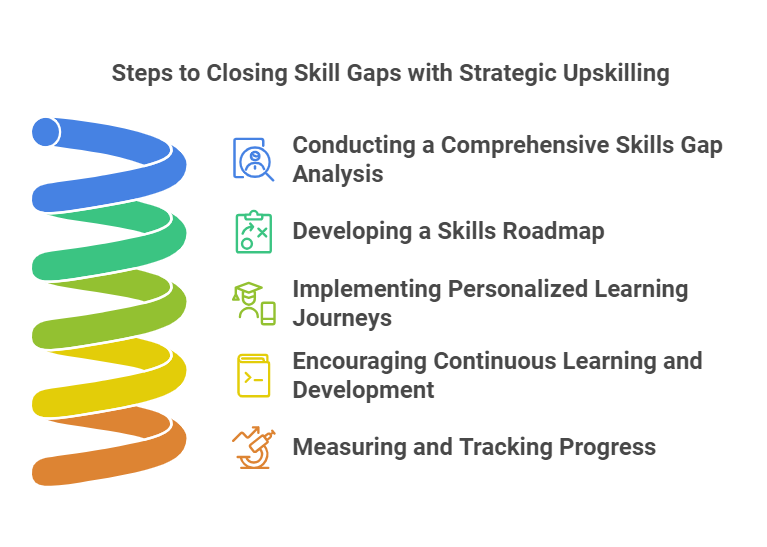
Closing skill gaps is essential for ensuring that a workforce remains adaptable, productive, and competitive in today’s fast-paced business environment. Workforce upskilling is the key to bridging these gaps effectively.
Let’s explore how Disprz can streamline each of these steps and provide actionable insights for organizations.
1. Conducting a Comprehensive Skills Gap Analysis
The first step in addressing skill gaps is conducting a thorough analysis of the current workforce’s capabilities compared to the skills required for future business needs. This step ensures that the right skills are developed at the right time.
- Identify Skill Gaps: Use a variety of multi-format, adaptive and other assessments to identify current skill gaps.
- How Disprz Helps: Disprz offers personalized content recommendations aligned to close current skill gaps and equip learners with industry-relevant skills that can help achieve future business goals, ensuring organizations stay ahead.
2. Developing a Skills Roadmap
Once the skills gaps are identified, the next step is to create a strategic roadmap that aligns skills development with organizational goals. This roadmap serves as a guide for upskilling initiatives.
- Align Skills with Business Goals: Developing skills that address both immediate gaps and long-term objectives helps organizations stay agile and competitive.
- How Disprz Helps: Disprz enables HR and L&D leaders to create structured skill taxonomies and personalized learning paths, aligning skill development with business priorities.
3. Implementing Personalized Learning Journeys
Personalized learning is key to engaging employees and helping them develop the skills they need. Each employee has unique learning preferences, and tailoring the learning journey can significantly improve outcomes.
- Highlight the Importance of Tailored Learning Paths: Personalized learning paths ensure that employees receive content that is relevant to their specific needs, learning style, and career progression. This enhances motivation, engagement, and retention of new skills.
- How Disprz Leverages AI: Disprz uses artificial intelligence to recommend customized content based on each employee’s skills, job role, and learning behavior. With AI-powered recommendations, employees are directed to the most relevant content, ensuring that they receive personalized learning experiences that directly address their skill gaps.
4. Encouraging Continuous Learning and Development
Fostering a culture of continuous learning is essential for keeping skills up-to-date and ensuring long-term success. Employees must be encouraged to regularly enhance their skills to stay relevant in a constantly evolving workplace.
- Foster a Culture of Lifelong Learning and Skill Enhancement: Employees should be motivated to pursue ongoing professional development, not just when a specific skill gap is identified. Organizations that support continuous learning benefit from higher employee engagement and greater adaptability to market changes.
- How Disprz Supports Continuous Learning: Disprz’s microlearning modules and interactive content formats make it easier for employees to engage in continuous learning. With short, multi-lingual, easily digestible content that employees can access anytime, anywhere, learning becomes an ongoing process rather than a one-time event.
5. Measuring and Tracking Progress
Finally, measuring the effectiveness of upskilling efforts is crucial for determining success and areas of improvement. By tracking progress, organizations can adjust their training programs to ensure they are having the desired impact.
- Stress the Importance of Data-Driven Insights and KPIs: Organizations should rely on data to measure the success of upskilling programs. Key performance indicators (KPIs), such as skill acquisition rates and employee performance, provide clear insights into whether upskilling initiatives are meeting their objectives.
- How Disprz Tracks Progress: Disprz offers robust tracking and reporting features that provide real-time insights into employee progress. With its comprehensive analytics, Disprz enables organizations to evaluate learning outcomes at user, content, and channel-level and identify areas where further training is needed, ensuring that upskilling efforts are aligned with organizational goals.
Take the next step in transforming your workforce with Disprz and unlock the full potential of your team today.
How does Disprz Drive Strategic Upskilling?
Effective workforce upskilling requires a structured approach and the right tools to ensure success. Disprz provides a comprehensive solution to address the diverse needs of organizations looking to close skill gaps and prepare their workforce for the future. Here’s an overview of how Disprz supports organizations in driving strategic upskilling and delivering measurable results.
Overview of Disprz Solutions
Disprz’s platform is built to meet the evolving needs of businesses looking to invest in workforce upskilling. Through a combination of cutting-edge technologies and innovative features, Disprz ensures that every upskilling initiative is impactful, scalable, and results-driven.
- Skill Gap Analysis & AI-Powered Recommendations: Disprz assesses skill gaps using multi-format, adaptive assessments based on learner response and provides AI-powered, personalized learning paths for future skill development.
- Scalable Microlearning & Content Hubs: Disprz offers bite-sized training modules and centralized content hubs, allowing employees to learn at their own pace and access tailored resources.
- Advanced Analytics for ROI: Disprz tracks learning progress, measures training effectiveness, and calculates ROI to help organizations optimize their upskilling efforts.
- Exhaustive content library: Disprz has a comprehensive offering of In-house, free, and paid content options that are tied to the learner’s skills.
Real-World Impact
To demonstrate the true value of workforce upskilling through Disprz, let’s take a look at some real-world success stories.
Bhima Jewels leveraged Disprz’s personalized Learning Experience Platform (LXP) to centralize and streamline their learning processes. By embracing online training, they were able to elevate their workforce’s skills, resulting in a significant increase in learning engagement. Employees shifted from short 15-minute sessions to in-depth, 1-hour weekly learning modules, driving active participation and contributing to operational excellence.
By leveraging Disprz’s solutions, organizations can stay ahead in the competitive market and ensure their workforce is always ready for the challenges ahead.
Addressing Challenges in Workforce Upskilling
While workforce upskilling is essential for organizational success, several challenges often hinder its effective implementation. These barriers can slow down the process, but with the right tools and strategies, they can be overcome. Here are some common obstacles organizations face and how Disprz can help address them.
Barriers to Success
Despite the growing need for skill development, many organizations encounter several roadblocks when attempting to upskill their workforce:
- Budget Constraints: Allocating sufficient resources for training programs can be difficult, especially when organizations face financial limitations. Traditional training methods, such as in-person workshops, often come with high costs.
- Time Limitations: Employees already have demanding schedules, making it challenging for them to dedicate time to training. This can result in disengagement or incomplete learning journeys.
- Employee Resistance to Change: Some employees may resist new training initiatives, especially if they feel overwhelmed by the volume of learning content or are unsure how it aligns with their current role.
These challenges must be addressed strategically to ensure that upskilling efforts are not only implemented but also sustained over time.
Disprz Solutions
Disprz offers comprehensive solutions to tackle these obstacles, ensuring that organizations can successfully implement workforce upskilling programs without compromising on quality or engagement.
- Scalable and Cost-Effective Platforms: Disprz’s platform is designed to be scalable, allowing businesses of all sizes to implement upskilling initiatives without breaking the budget. With flexible pricing models and cloud-based solutions, Disprz offers an affordable way to deliver high-quality learning at scale.
- Flexible, Mobile-Friendly Learning Options: Understanding the need for flexibility, Disprz offers mobile-first, on-demand learning solutions. Employees can access learning modules at their convenience, fitting training into their busy schedules without disrupting their workday.
- Engaging, User-Friendly Interfaces to Drive Adoption: Employee engagement is critical for successful upskilling. Disprz’s intuitive and interactive interface makes it easy for employees to navigate the platform and engage with content. This user-friendly design increases adoption rates and ensures employees are more likely to participate in and complete training programs.
By addressing the common barriers to workforce upskilling, Disprz ensures that organizations can successfully close skill gaps and build a future-ready workforce, all while maintaining efficiency, cost-effectiveness, and employee satisfaction.
Discover how Disprz can help you develop your workforce and stay competitive in today’s rapidly changing market.
Future Trends in Workforce Upskilling
Emerging trends in skills, technology, and learning methods will shape the future of workforce development. Here’s a quick look at what to expect.
Emerging Skills in Demand
- Artificial Intelligence (AI): As AI transforms industries, employees with skills in machine learning, data processing, and automation are in high demand. Upskilling in AI will be critical to maintaining a competitive edge.
- Data Literacy: With data-driven decision-making on the rise, employees who can interpret and leverage data are highly sought after. Data literacy and analytics skills are essential across industries.
- Sustainability: Green skills, such as expertise in renewable energy and eco-friendly business practices, are becoming more important as companies focus on sustainability.
- Soft Skills: Emotional intelligence, collaboration, and leadership continue to be crucial for driving innovation and effective teamwork in the workplace.
The Role of Technology in Workforce Development
Technology is revolutionizing workforce upskilling by making learning more accessible and personalized:
- AI & Analytics: AI-powered platforms, like Disprz, are helping organizations identify skill gaps and deliver personalized learning paths.
- Mobile Learning: Employees expect flexible, on-the-go learning options. Mobile-first and microlearning approaches are crucial for continuous skill development.
- Virtual Reality (VR): In industries like healthcare and manufacturing, VR is offering immersive training experiences for complex tasks, enhancing learning retention.
Disprz’s Role in Preparing for the Future
Disprz is well-equipped to help organizations adapt to these workforce upskilling trends:
- GenAI-Powered Learning & Skilling: Disprz identifies current skill gaps and suggests personalized learning journeys to close them.
- Scalable Microlearning: Disprz’s bite-sized, mobile-friendly content ensures continuous learning without overwhelming employees.
- Analytics for Progress Tracking: Disprz’s platform tracks learning progress and measures ROI, ensuring upskilling efforts are effective and aligned with business goals.
As the demand for new skills like AI and sustainability grows, Disprz is ready to help organizations build a future-ready workforce through strategic workforce upskilling.
Get started with Disprz today and empower your workforce for the challenges of the future.
Conclusion
Addressing skill gaps through strategic upskilling is no longer just a necessity—it’s a competitive advantage. As organizations face the challenges of a rapidly changing business environment, workforce upskilling provides the key to maintaining productivity, innovation, and long-term success.
Disprz offers a comprehensive solution for workforce development, helping HR and L&D leaders build targeted upskilling programs that deliver measurable results. From AI-driven skill assessments to personalized learning journeys, Disprz ensures that your organization can effectively close skill gaps and stay ahead of the competition.
HR and L&D leaders, now is the time to act. Explore Disprz’s innovative platform to close skill gaps and create a workforce that is ready for the future. Take the first step toward transforming your organization today through workforce upskilling with Disprz.

